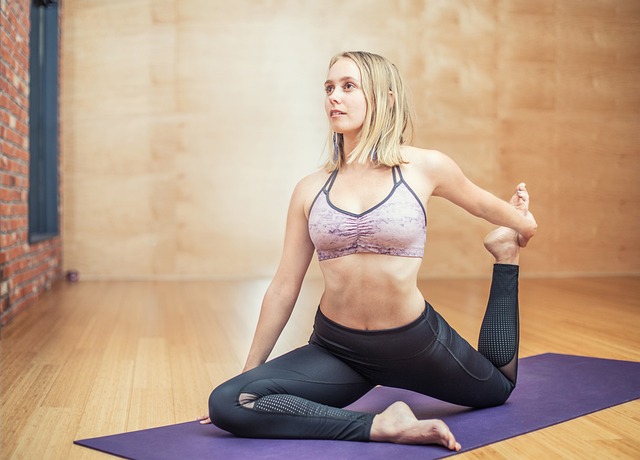
This is “Zen and Clean: A Complete Guide on How to Clean Your Yoga Mat.” In the world of yoga, where the mind and body work in harmony, the yoga mat is more than just a surface for poses; it is a sanctuary for balance and peace. Keeping your yoga mat clean is crucial to a calm practice, enabling you to fully engage in the practice of mindfulness without being distracted by dirt and grime. This comprehensive guide is here to give you clear, simple-to-follow instructions so that your yoga mat continues to be a source of purity, assisting you on your path toward inner tranquility.
In the following paragraphs, we will discuss the significance of maintaining a clean yoga mat and examine easy-to-follow yet efficient cleaning techniques that are in line with the zen and simplicity principles. Whether you are a novice or an experienced practitioner, come along as we explore the path to a spotless mat, improving your practice and creating a relationship between the cleanliness of your mat and your mental clarity.
Here is our post on A Comprehensive Guide on How to Clean Your Sports Equipment for Hygiene and Longevity
The Importance of a Clean Yoga Mat
1. Hygiene in Yoga Practice
A clean yoga mat is crucial for maintaining hygiene during your practice. Sweat, dirt, and bacteria can accumulate over time, potentially leading to skin irritations and infections. Regular cleaning promotes a healthy and pure environment for your yoga sessions.
2. Prolonging the Mat’s Lifespan
Cleaning your yoga mat isn’t just about hygiene; it’s also about preserving its longevity. Regular maintenance prevents the deterioration of the mat’s material, ensuring that it continues to support your practice for years to come.
3. Enhancing Your Practice Experience
A clean yoga mat provides a fresh and inviting surface for your practice. It contributes to a positive atmosphere, allowing you to fully immerse yourself in the mental and physical benefits of yoga without distractions.
4. Avoiding Unpleasant Odors
Sweat and moisture can lead to unpleasant odors on your yoga mat. Proper cleaning eliminates these odors, creating a more pleasant and inviting space for your practice and for anyone sharing the yoga studio with you.
5. Supporting Mind-Body Connection
Yoga is about the connection between mind and body. A clean yoga mat symbolizes respect for your practice, creating a harmonious environment that aligns with the principles of mindfulness and self-care.
How to Choose the Right Cleaning Supplies
Gentle Soap
Select a mild and gentle soap for cleaning your yoga mat. Natural, plant-based soaps or a mixture of mild dish soap and water work well without harsh chemicals that may damage the mat’s material.
Distilled White Vinegar
Distilled white vinegar is a natural disinfectant and deodorizer. Mix it with water to create a cleaning solution that effectively eliminates bacteria and odors without leaving a residue.
Tea Tree Oil
Tea tree oil possesses natural antibacterial and antifungal properties. Adding a few drops to your cleaning solution enhances its germ-fighting capabilities, leaving your yoga mat refreshed and sanitized.
Lemon Juice
Lemon juice is known for its natural cleaning properties and fresh scent. It helps break down oils and grime, leaving your mat clean and invigorated after each use.
Alcohol-Free Disinfectant Spray
Opt for an alcohol-free disinfectant spray specifically designed for yoga mats. These sprays are effective in killing germs and bacteria without causing damage to the mat’s surface.
See also our post on How to Clean Your Home Gym Equipment: Hygiene and Performance
Regular Maintenance Routine
Pre-Practice Wipe Down
Before each practice, give your yoga mat a quick wipe down with a damp cloth or a yoga mat cleaning spray. This removes surface dirt and prepares the mat for a clean and comfortable session.
Post-Practice Cleaning
After your practice, perform a more thorough cleaning. Use a gentle soap or a mixture of soap and water to clean the entire mat. Pay attention to areas that come in direct contact with your hands and feet.
Deep Cleaning
Incorporate a deep cleaning session into your routine at least once a month. Lay the mat in a bathtub or large basin and use a soft brush or sponge to scrub it gently with a diluted cleaning solution. Rinse thoroughly and allow it to air dry.
Sun-Drying
Sun-drying is a natural and effective way to eliminate moisture and odors from your yoga mat. After cleaning, lay the mat in a sunny spot to air dry. Avoid direct sunlight for extended periods to prevent color fading.
Rotation Strategy
If you have multiple yoga mats, rotate their use to give each mat time to air out and recover between practices. This prevents excessive wear on a single mat and extends the lifespan of all your mats.
Special Care for Different Mat Materials
PVC Mats
PVC mats are durable and popular, but they require special care. Use a gentle soap and water solution, avoiding harsh chemicals that may degrade the PVC material. Wipe dry after cleaning to prevent moisture retention.
Rubber Mats
Rubber mats can be sensitive to certain cleaning agents. Opt for a mild soap or a yoga mat cleaner designed for rubber surfaces. Avoid oils or solvents that may compromise the rubber’s integrity.
TPE Mats
TPE (Thermoplastic Elastomer) mats are eco-friendly and resilient. Clean with a mixture of mild soap and water. Avoid excessive heat during drying to prevent deformation of the TPE material.
Cotton or Jute Mats
Cotton or jute mats require gentle care. Spot clean with a damp cloth and mild soap, focusing on stained areas. Air dry in a shaded area to prevent damage to the natural fibers.
Travel Mats
Travel mats are often thinner and more compact. Clean them regularly with a gentle solution, and consider using a yoga towel or mat cover for added protection during practice.
See also our post on How to Clean and Sanitize Gym Bags and Workout Gear
Additional Tips for a Clean Practice
Personal Towel Use
Place a small towel on your yoga mat during practice, especially if you tend to sweat a lot. This provides an extra layer of protection and makes cleaning more manageable.
No Shoe Policy
Reinforce a no-shoe policy on your yoga mat. Shoes can carry dirt and germs from outside, compromising the cleanliness of your practice space.
Mat Cover or Towel
Consider using a mat cover or towel, especially if you’re practicing hot yoga. These accessories absorb sweat and protect the mat, making post-practice cleaning more efficient.
Storage Considerations
Store your yoga mat in a cool, dry place when not in use. Avoid leaving it in direct sunlight or enclosed spaces where moisture can accumulate, promoting bacterial growth.
Regular Mat Check
Regularly inspect your yoga mat for signs of wear, tears, or damage. Address any issues promptly to prevent further deterioration and maintain a safe practice surface.
Conclusion
Incorporating these practices into your routine will guarantee that your yoga mat continues to be a haven for mindfulness, health, and well-being. Let the purity of your mat add to the tranquility of your yoga journey. A clean yoga mat is more than just a practical necessity—it is a reflection of your commitment to a pure and revitalizing yoga practice.







